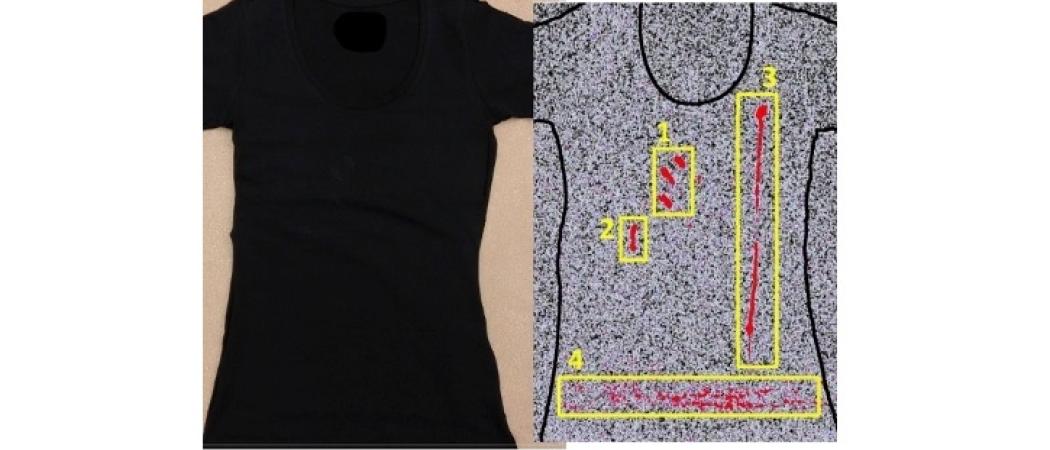New method for detection of elusive forensic traces

Analysis of a T-shirt containing various blood containing traces such as fingerprints, droplets and blood spatter. Photo: NFI.
Based upon a technique originally developed for imaging chemical elements in paintings and other works of art, Dutch researchers have established a new method for detecting ‘hard to find’ and concealed forensic traces. The method, resulting from a special collaboration between the University of Amsterdam (UvA), the Netherlands Forensic Institute (NFI), TU Delft and the Rijksmuseum, has recently been published in Nature’s open access journal Scientific Reports.
First author of the publication is Kirsten Langstraat, student of the Forensic Science Master program at the UvA. Langstraat conducted most of the practical work during an internship with the gunshot residue team at NFI and in collaboration with the NFI teams for crime scene investigation and biological traces. Corresponding author is NFI researcher Arian van Asten, who is professor of Forensic Analytical Chemistry at the UvA's Van 't Hoff Institute for Molecular Sciences.
Elemental signatures
The new forensic analytical method is based on MA-XRF, which is an abbreviation for scanning macro x-ray fluorescence spectroscopy. In art science MA-XRF is known for revealing hidden paint layers, an exciting feature which has assisted in art authentication and has enabled studies into the creative process of artists.
The current study demonstrates, for the first time, the potential of MA-XRF in forensic science. It can detect and image biological traces (such as blood, sperm, urine and sweat) and complex gunshot residue patterns, especially on clothing items that are too dark or too fluorescent to be investigated with traditional forensic techniques. Both biological traces and gunshot residue have specific elemental 'signatures' which can be determined using MA-XRF.
Evidence revealed
The method is fully compatible with forensic DNA profiling. In addition the new method offers interesting opportunities for aged traces, mixed stains, traces of poor quality, and for traces that have been accidentally or intentionally concealed. For instance, MA-XRF based imaging of lead enabled the detection of a bullet impact in a wall - even when multiple layers of paint were applied to conceal the evidence.
Publication
Kirsten Langstraat, Alwin Knijnenberg, Gerda Edelman, Linda van de Merwe, Annelies van Loon, Joris Dik & Arian van Asten: Large area imaging of forensic evidence with MA-XRF Scientific Reports, published online 08 November 2017. DOI:10.1038/s41598-017-15468-5
This release was first published 13 November by the University of Amsterdam.




 A unique international forum for public research organisations and companies to connect their external engagement with strategic interests around their R&D system.
A unique international forum for public research organisations and companies to connect their external engagement with strategic interests around their R&D system.